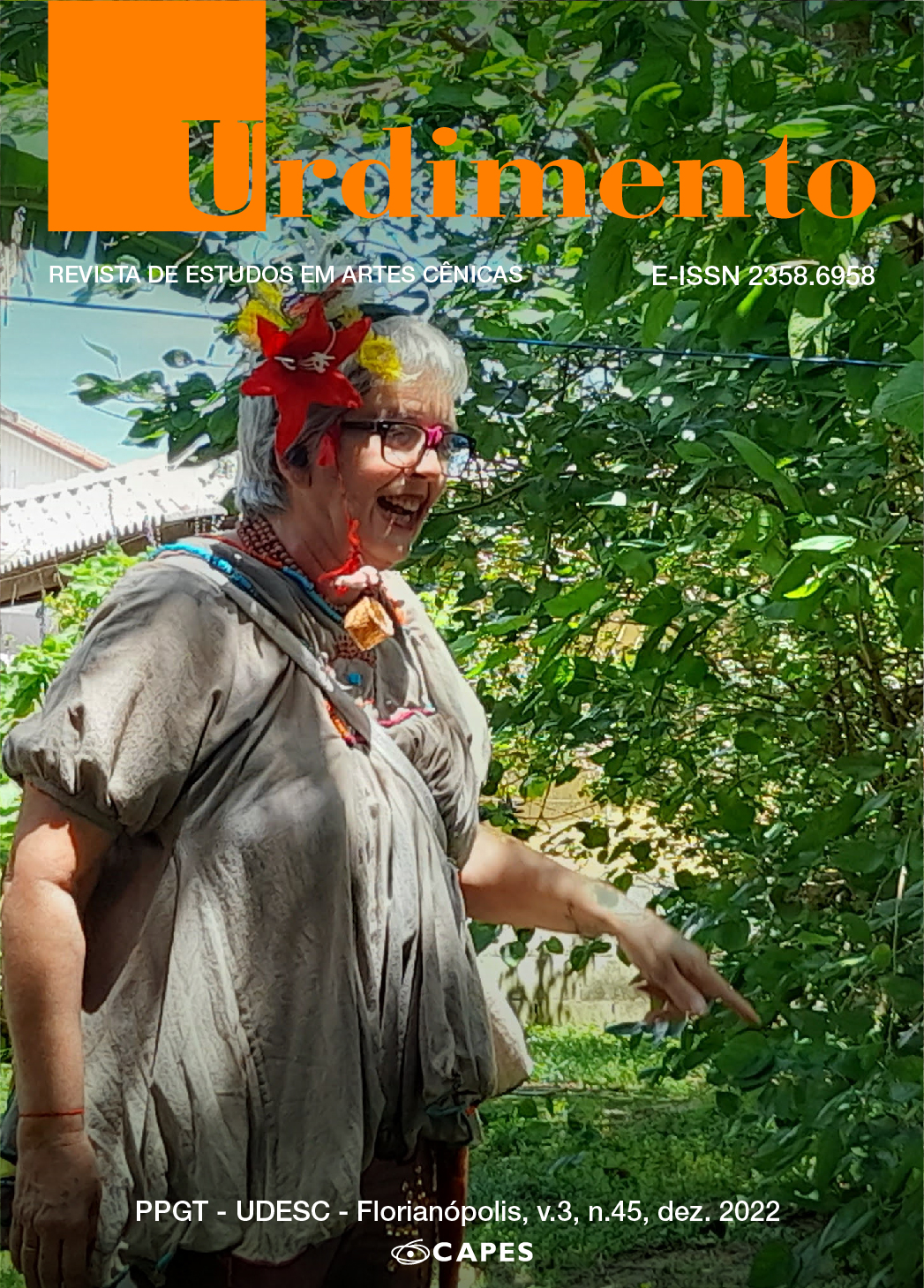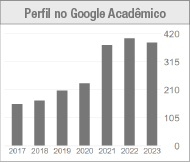Seductive realism as a metaphor for a body-art re-education
DOI:
https://doi.org/10.5965/1414573103452022e0801Keywords:
Body-theatre, Anthropophagy, Biopolitics, Body educationAbstract
This is a review of an intense and complex work, in which the author creates the metaphorical concept of seductive realism, with the aim of revisiting the appropriation of the word theater that branches out to the real-fiction binarism associated with the Aristotelian tradition. The proposal makes us think about the education of the body in and for art, Ribeiro instigates to think that acting is not interpreting reality, but experiencing it through an intuitive body, which interferes and is interfered by the social, political, economic and social environment. culturally, affectively, therefore seductive, revolutionary, transgressive. In this, it challenges what is understood and what is taught about theatrical art, when it proposes to break with the screens of reality and representation that condition us. invests in a multiple, untimely Artaudian body, which unfolds throughout the text in other concepts, machinic, biopolitical, anthropophagic, aesthetically emancipated bodies.
Downloads
References
ARTAUD, Antonin. Linguagem e vida. São Paulo: Perspectiva, 2004.
DELEUZE, Gilles; GUATTARI, Félix. O que é a filosofia?. 3. ed. São Paulo: Editora 34. 2010.
RIBEIRO, Martha. Textualidades Contemporâneas: o realismo sedutor e sua configuração na dramaturgia brasileira. Urdimento – Revista de Estudos em Artes Cênicas, Florianópolis, v. 1, n. 20, p.131-140, 2013.
RIBEIRO, Martha. Realismo sedutor: o corpo-teatro e a invenção de realidades. São Paulo: Hucitec Editora, 2022.
ROLNIK, Suely. O caso da vítima: para além da cafetinagem da criação e de sua separação da resistência. ARS, São Paulo, v. 1., n. 2., p. 79-87, 2003.
Published
How to Cite
Issue
Section
License
Copyright (c) 2022 Urdimento - Revista de Estudos em Artes Cênicas

This work is licensed under a Creative Commons Attribution 4.0 International License.
Copyright Statement
The articles published by the magazine are free to use. The copyright is all assigned to the magazine. The articles whose authors are identified represent the expression from the point of view of their authors and not the official position of the journal Urdimento. The author (s) undertakes whenever publishing material relating to the article published in Revista Urdimento mention the said publication as follows: This article was originally published by Urdimento magazine in its volume (put the volume), number (put the number) in the year of (put the year) and can be accessed at:
http://www.revistas.udesc.br/index.php/urdimento
This work is licensed under a Creative Commons Attribution 4.0 International License.




